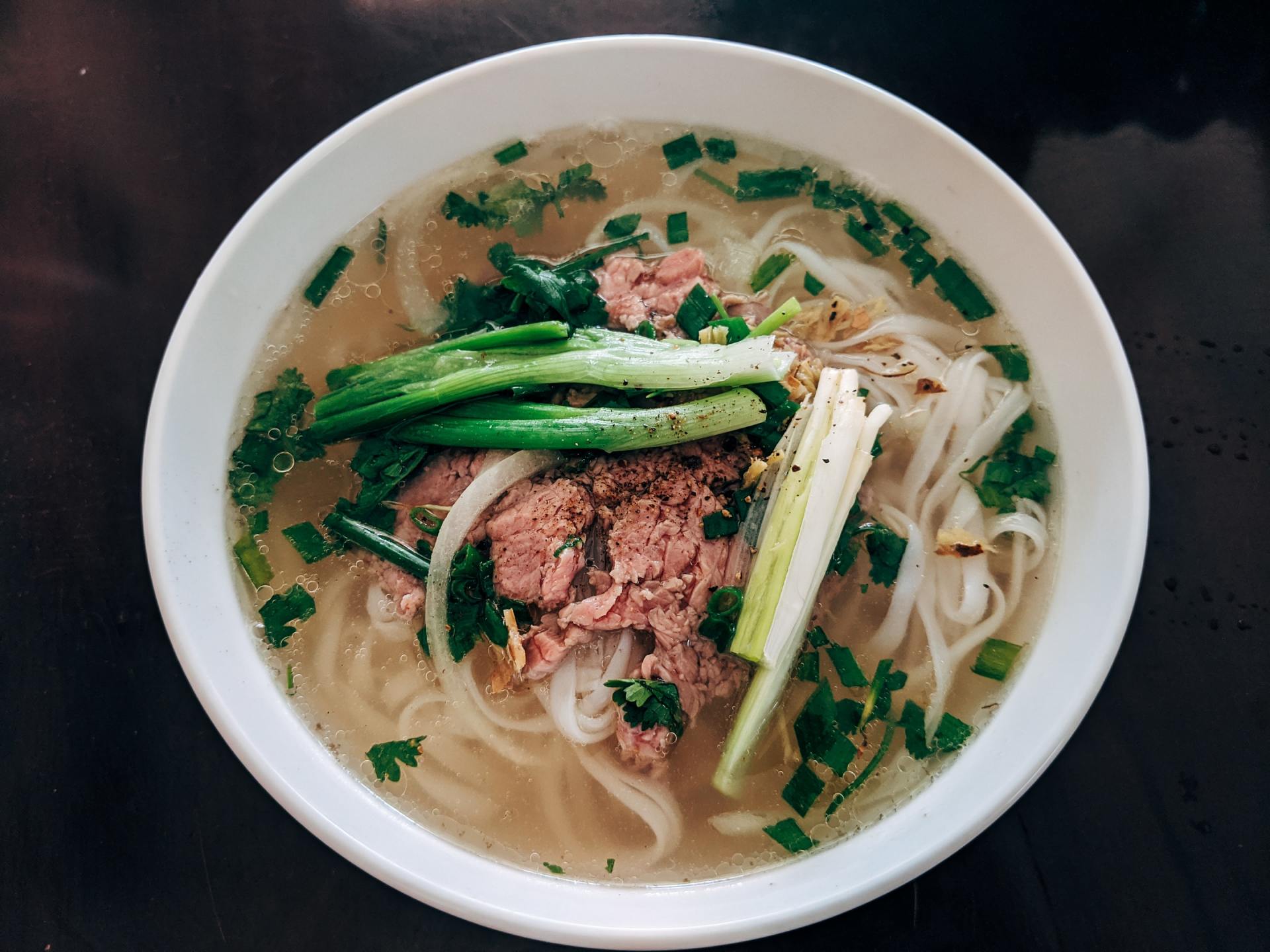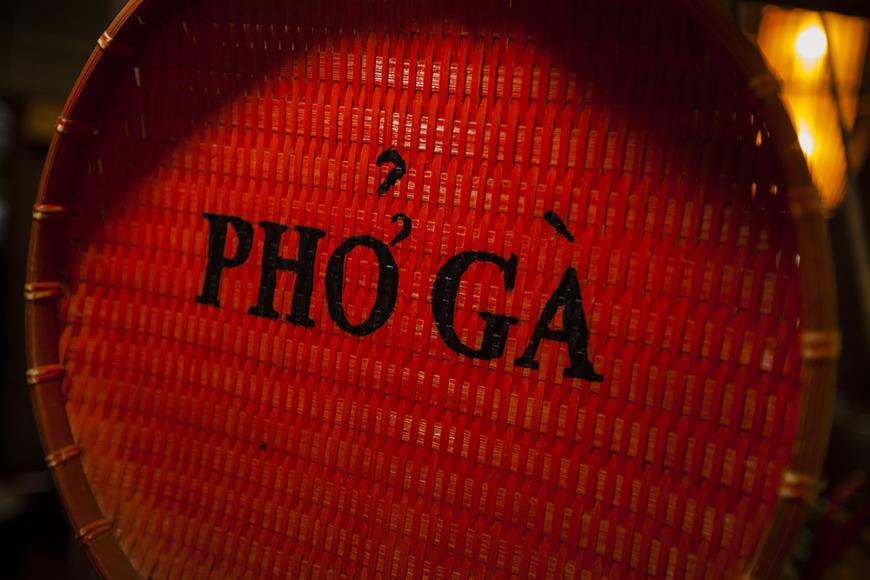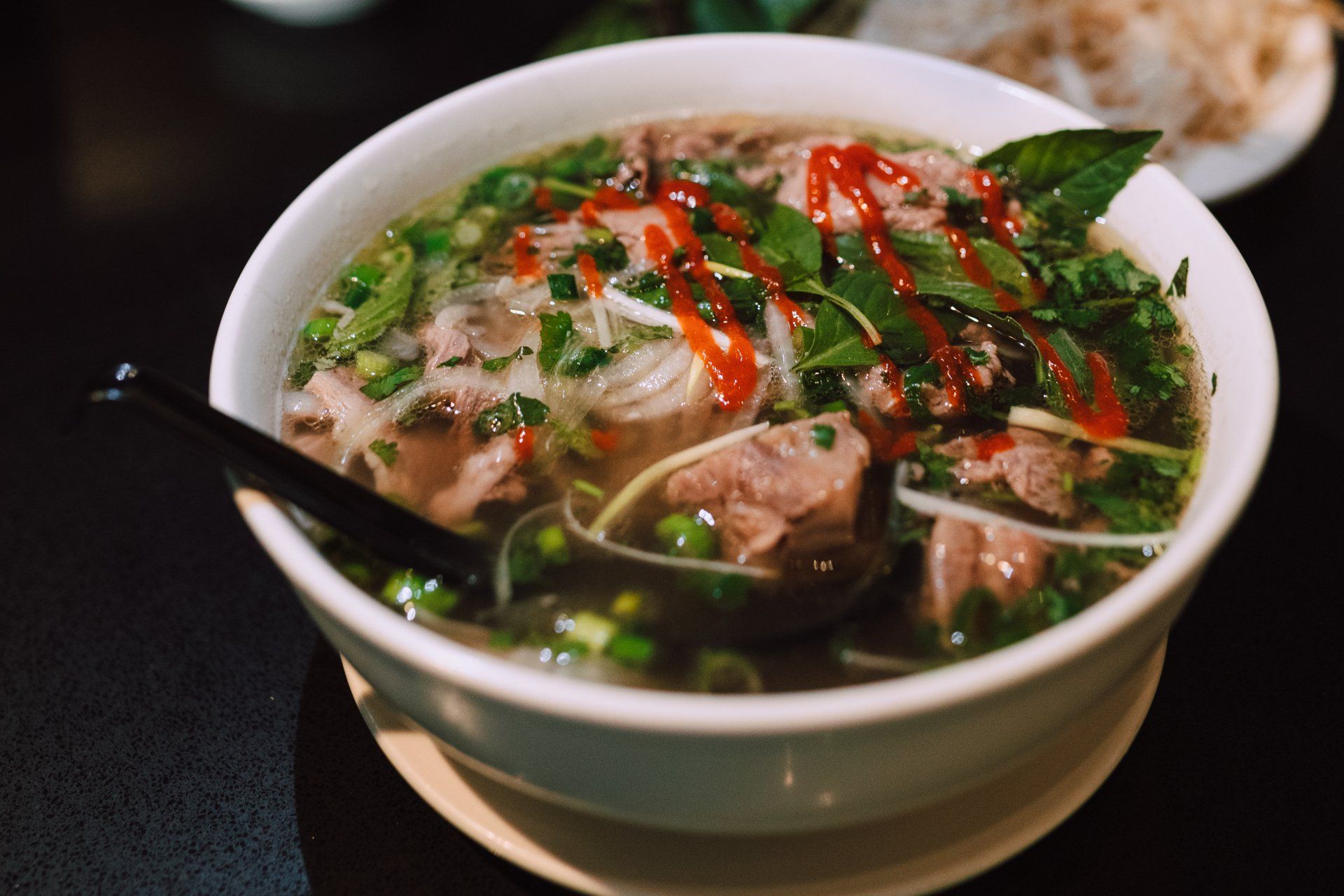Two Great Locations: Brookline | Newton Centre
ORDER NOW
ABOUT
History of Phở
History of Phở
History of Phở
Phở is an everyday breakfast meal in Vietnam's capital of Hanoi.
Beginning at dawn, phở stalls open up on sidewalks and stoops throughout the city. Steam billows as the chef fills each bowl to order. The coveted broth, still boiling, envelops softened rice noodles and sliced meat. Traditional Hanoi phở is made with pulled chicken. It's topped with a handful of chopped herbs and chives. Each diner, often seated in a low plastic chair, barely off the sidewalk, dresses their bowl to taste with lemon and lime, sliced red chili, fresh basil, bean sprouts. Hoisin sauce and chili paste are served on the side, so as not to alter the taste of the broth. If you're among those lucky enough to visit Vietnam, it's a must-do during your time there.
Legend has it that Nam Dinh is the home region of phở as we know it today, it's widely known that Hanoi is where it made its mark. Hanoi's cross of historical and cultural factors made phở the globally-known dish it is today.
The history of phở begins at the end of the 1800s, the peak of Vietnam's French colonial era. Demand from Francs led to the rise to prominence of beef in Vietnam. This rise created an unintended oversupply of beef bones, used by phở vendors to strengthen the flavor profile of the Nam Dinh broth at the center of phở as we know it today.

Phở Tai
Button
Phở Ga
Button
Follow Us
© 2025
All Rights Reserved | Phở Viet's | Online Ordering by ChowNow | Restaurant Websites by Successtaurant

